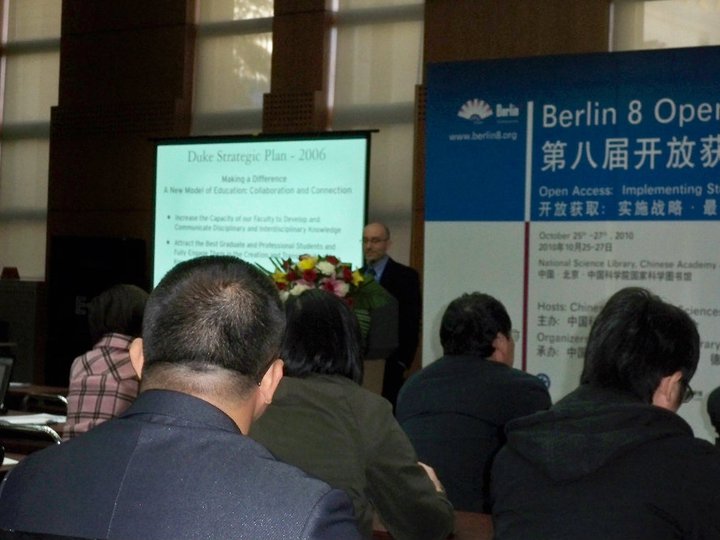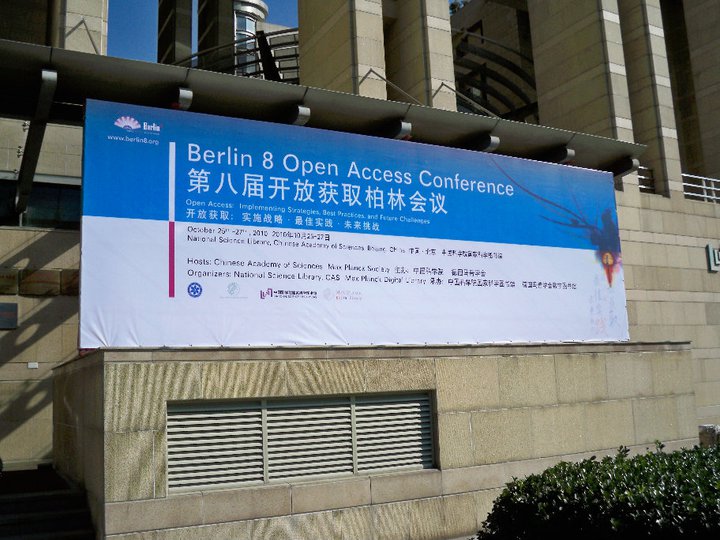Yesterday I was part of a fascinating discussion between librarians and a faculty member who has just become head of the publications board of her scholarly scientific society. She was anxious to learn from librarians about how we approaching bundling deals, pricing policies and open access. Lots of this conversation was really interesting and important for both parties, but the biggest thing I took away from the discussion was the faculty editor’s desire to convince her large commercial publisher to make open access options more available and less costly for her authors. She understood that open access would benefit those authors and increase the journals’ impact, thus helping to ensure their long-term viability. She also saw through the publisher’s hype and grasped that they were really trying to inhibit open access with their policies, not facilitate it.
It was in the context of that discussion that I finally got around to reading the new Journal Publishing Agreement from the American Chemical Society. The hype from ACS is that their new contract “expands author rights and clarifies author responsibilities.” The reality is that ACS authors will continue to be behind the curve in scholarly communications under this agreement.
I have not compared the old and new agreement closely, so I am prepared to accept that this agreement is an improvement over the old one for authors. It does outline quite clearly, in some cases, what authors can do with their own work once they cede copyright, gratis, to the ACS.
In this post on the Book of Trogool blog, Beth Brown does a nice job of explaining some of the problems with the new ACS agreement. I will amplify some of her points here and also add one very picky and lawyerly note.
Most importantly, of course, the new agreement is a complete transfer of copyright to the publisher. Sometimes authors think they might still hold copyright in earlier versions of their articles, written prior to what they submit. This is probably incorrect as a legal matter, but the ACS is taking no chances. The new agreement specifies that ACS will hold the copyright in all versions of a submitted article. As Brown indicates in her post, and our conversation with our faculty editor also proved, this is moving against the trend in most other sciences and shows why chemists will continue to be disadvantaged by their scholarly society.
Of course, if authors retain sufficient rights to disseminate their work, this problem could be alleviated. But in all three important ares, this is not the case.
First, for authors using their own work with students, that new JPA encourages use of a link to their “articles on request” service. If authors use that, their students will have access to 50 free downloads of the article and, after that, will have to pay a per-use charge. After one year the article on request link will provide free access. So there is a pretty clear attempt to generate some new income by getting students to pay for articles outside of the publisher’s subscription income stream. In fairness, however, this is the first listed method of using work with students but not the only one; authors are allowed to post their articles in secure systems for student access.
Next, distribution to colleagues is also limited, this time entirely, to the “articles on request” service described above. Thus authors essentially get 50 free “offprints.” After that someone, either the author herself or the colleague with whom she wants to share her work, must pay. This pay wall is supposed to disappear after 12 months, but by then the window for productive sharing has probably closed.
Lastly, authors’ ability to put their work into an open access repository is severely limited. It looks at first glance like authors have pretty broad permission to post their submitted version of their article, but there is a condition. Authors must get written permission from the journal editor that posting of their submitted version does not violate the policies of the particular journal. So this attempt to be clearer about author rights really hides behind the obscurity of potentially various journal demands. When we get to posting the published version, this is allowed only if the author is subject to a mandate, either from a funder or the author’s institution. These mandates can be complied with after a 12 month delay. If the mandate requires quicker access, the author is told they must pay for open access through the ACS “Author’s Choice” program.
It is interesting that this new policy actually creates an incentive for open access mandates. I’m not sure its authors were really thinking that one through; they just saw OA as a threat and moved to postpone it for 12 months, to the ultimate detriment, we can be sure, of chemistry authors and researchers. Another place the JPA authors were not paying close attention — and this is the nitpicking I promised — was in the clause on “supporting information” that accompanies an article, for which, the agreement says, the copyright transfer is non-exclusive. This is simply poor drafting, since a non-exclusive transfer is essentially an oxymoron. The agreement goes on to clarify that both the ACS and the author have full rights to exercise copyright in such material, which is more or less a “joint authorship” situation. I puzzled over this odd clause with another lawyer yesterday, and our conclusion was that the actual effect of this language, if a court had to interpret it, would probably be a transfer of copyright to the ACS and a license back to the author. But whether that licenses is itself exclusive or non-exclusive and the exact scope of it is unclear.
This new ACS agreement clearly indicates a desire to stave off open access and to control it in a way that does not threaten the traditional thinking in scholarly publishing. But as our faculty editor indicated yesterday, this traditional thinking is no longer good enough. In her field, she told us, open access journals are arising that pose serious competition to the more traditional journals that she is responsible for. She is already afraid that these OA journals will grow in success and that her journals, with their very limited OA options, will suffer. The same fear ought to grip the ACS. Sooner or later chemists will find new ways to disseminate their research, just as other scientists have already done, and ACS journals will, without further change, begin to decline. OA is a proven benefit to scientific research, and this attempt by ACS to grasp and control it so tightly might just backfire.



